Trade schools, or vocational schools, present a practical alternative for students aiming for skilled careers across diverse industries. Emphasizing hands-on training and relevant coursework, these institutions enable students to enter the workforce quickly, often within two years. This guide explores the benefits and drawbacks of trade school, assisting prospective students in deciding whether this route aligns with their career aspirations or if traditional college is a better fit.
1. Overview of Trade School Options
Trade schools, or vocational schools, provide targeted training in specific career fields, allowing students to gain practical skills quickly. With programs often completed in two years or less, and some certificates available in under a year, these institutions offer a faster and more affordable alternative to traditional four-year colleges. Graduates can enter the workforce in high-demand jobs like web developer or dental hygienist.
Many trade school programs emphasize hands-on training through internships or apprenticeships, enhancing real-world experience. Smaller class sizes foster personalized instruction and networking opportunities, which can be beneficial for career advancement. While trade school graduates may encounter limited financial aid options and career growth compared to traditional college graduates, they often enjoy higher completion rates and job placement assistance, making them a viable option for many students.
2. Pros: Hands-On Learning Experience
Trade schools provide a unique hands-on learning experience that equips students with practical skills essential for their chosen careers. By engaging in real-world tasks, learners can transition smoothly into the workforce, often requiring minimal additional training. This approach fosters confidence and competence in their abilities.
Many trade school programs incorporate internships or apprenticeships, allowing students to gain valuable experience while still in school. This integration of theory and practice not only enhances learning but also helps students build professional networks. Such connections can be crucial for securing employment after graduation.
The shorter duration of trade school programs, typically two years or less, is a significant advantage for those eager to enter the job market quickly. This accelerated education model enables students to focus on specialized skills that are in high demand, ensuring they are well-prepared for entry-level positions upon completion.
Additionally, smaller class sizes in trade schools promote personalized instruction, allowing for more interaction between students and instructors. This environment fosters a sense of community among peers, enhancing collaboration and support. As a result, students often find themselves well-prepared for stable careers in fields that are less susceptible to economic downturns.
3. Pros: Shorter Program Duration
Trade school programs are designed to be completed in two years or less, making them an attractive option for those eager to enter the workforce quickly. This shorter duration allows students to gain practical skills and knowledge without the lengthy commitment associated with traditional college degrees. Many programs even offer certificate options that can be finished in under a year, providing a fast track to employment.
The focused, hands-on education provided by trade schools equips students for entry-level positions or apprenticeships right after graduation. This immediate readiness for the job market is a significant advantage, as it enables graduates to start earning sooner. While the accelerated pace of these programs can be demanding, it ultimately leads to quicker career advancement opportunities for motivated individuals.
Additionally, trade schools often feature smaller class sizes, fostering a more personalized learning environment. This intimate setting allows for greater interaction between instructors and students, enhancing the educational experience. Students also benefit from building close-knit communities, which can provide valuable networking opportunities and support as they transition into their chosen careers.
4. Pros: Focused Career Training
Trade schools offer a streamlined path to career readiness, enabling students to acquire essential skills in a shorter timeframe than traditional four-year colleges. With programs often completed in two years or less, learners can quickly transition into well-paying jobs across various industries, such as web development and dental hygiene. This focused approach ensures that students gain relevant knowledge tailored to their chosen fields.
Additionally, trade schools emphasize hands-on training and professional development, equipping graduates with the practical experience needed for immediate employment. Smaller class sizes foster personalized instruction, enhancing the learning experience and building strong peer connections.
With higher graduation and job placement rates, trade schools provide a reliable route to specialized, in-demand careers, ensuring greater job stability for their graduates.
5. Cons: Limited Financial Aid Availability
Limited financial aid availability can significantly impact students pursuing trade school. Unlike traditional college students, who benefit from a wide range of grants, scholarships, and federal loans, trade school attendees often face fewer financing options. This disparity can make it challenging for them to afford their education.
6. Cons: Potential Job Market Saturation
Trade schools can sometimes contribute to job market saturation, particularly in fields that attract a large number of students. When many graduates emerge from similar programs at the same time, the competition for entry-level positions can become fierce. This oversupply of candidates may lead to difficulties in securing jobs or apprenticeships, especially in localized markets.
Prospective students should be aware of the potential for high competition in their chosen field. Researching the projected job growth rates and demand for specific trades in their area is crucial. By understanding the local job market dynamics, students can make informed decisions about their education and career paths, potentially avoiding oversaturated fields.
- High competition for entry-level jobs can arise from many graduates entering the same field.
- Job market saturation may lead to difficulties in securing employment or apprenticeships.
- Researching projected job growth rates is essential for prospective students.
- Local market dynamics can significantly impact job availability.
- Informed decisions about education can help avoid oversaturated fields.
7. Cons: Less Flexibility in Scheduling
Trade schools often operate on a fast-paced schedule, which can significantly limit students’ flexibility in managing their time. With a rigorous curriculum, students may struggle to find free time outside of their classes, making it difficult to balance personal commitments. This structured environment can be overwhelming for those trying to juggle work or family responsibilities alongside their education.
Additionally, many trade programs require on-campus attendance, further constraining students’ ability to create a flexible schedule. The demanding nature of these programs can pose challenges for individuals with full-time or part-time jobs, as well as those with family obligations. As a result, prospective students must carefully consider their ability to commit to such a structured learning environment.
8. Comparing Trade School and College
Trade school offers a practical alternative to traditional four-year colleges, focusing on specialized, in-demand careers. With programs often completed in two years or less, students gain hands-on training and relevant skills for well-paying jobs, such as web developers and dental hygienists. Smaller class sizes enhance personalized instruction, though limited financial aid and job competition can pose challenges.
In conclusion, trade schools present a practical and cost-effective alternative to traditional college, offering specialized training and quicker entry into the workforce. While they can lead to lucrative careers with lower debt, potential limitations in career advancement and flexibility should be considered. Ultimately, individuals must assess their personal goals and circumstances to choose the most suitable educational route.



